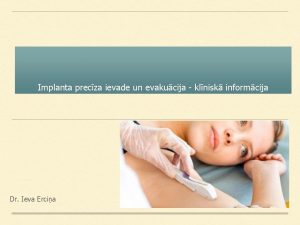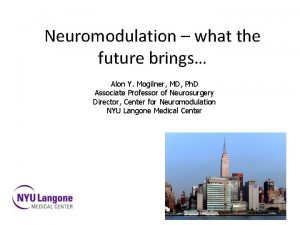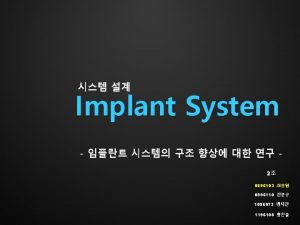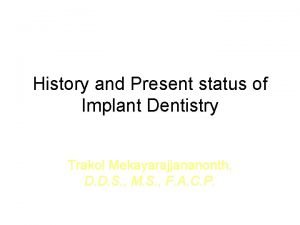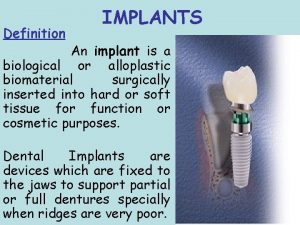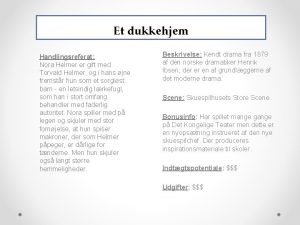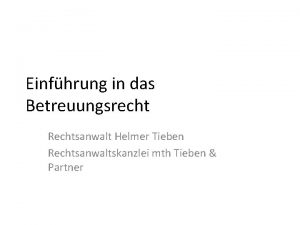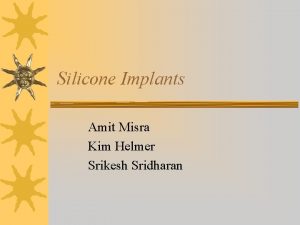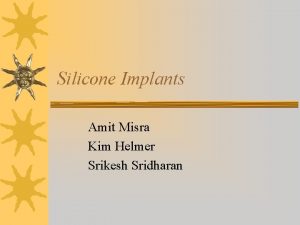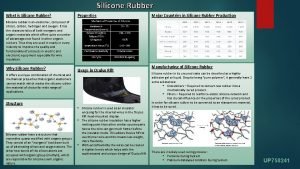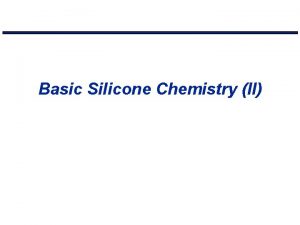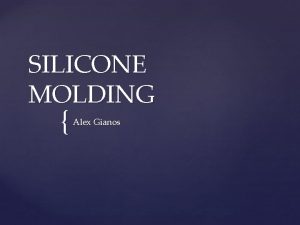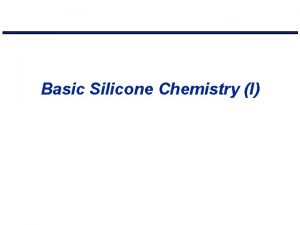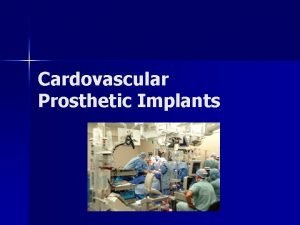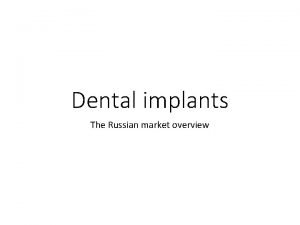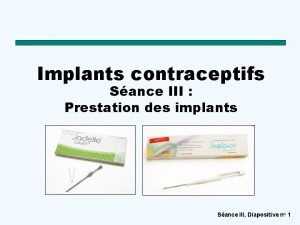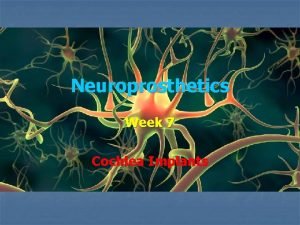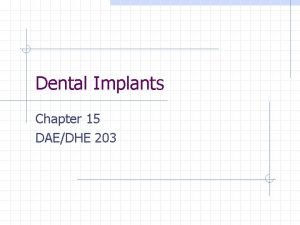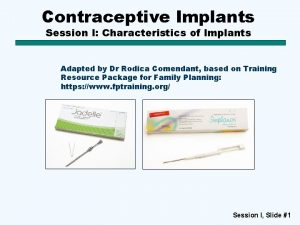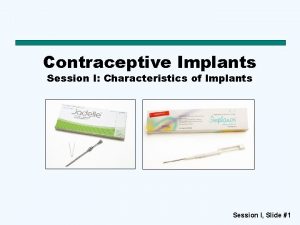Silicone Implants Amit Misra Kim Helmer Srikesh Sridharan

















- Slides: 17

Silicone Implants Amit Misra Kim Helmer Srikesh Sridharan

Overview ¬ Introduction ¬ History ¬ Material ¬ Advantages ¬ Disadvantages ¬ Concerns ¬ Dow Corning Case ¬ Currently

Introduction ¬ Polysiloxane or Silicone are inorganic polymers. ¬ Silicone became popular in the 1960’s as a medical grade implant. ¬ Silicone implants uses varied from medical conditions to personal well-being. ¬ Medically, silicone used for artificial limbs, pacemakers and various other implants in the body. ¬ Personal well-being, silicone is used for breast augmentation. Our project research generally concentrated on breast implants.

Introduction ¬ Silicone implants comes as a sack of silicone elastomers, which is surgically implanted under the chest tissue. ¬ Companies that produced silicone implants were Dow Corning, Bristol Meyers-Squid and Bioplasty. ¬ Disadvantages of silicone were not realized by people until the mid 1970’s. ¬ Leaking, rupture, and hematoma became common problems. ¬ People were outraged by the side effects leading to major controversy.

History ¬ In 1930’s, silicone was developed as a synthetic polymer. ¬ In the late 1940’s, physicians began to inject silicone to smooth out wrinkles. ¬ In 1962, Dr. Thomas Cronin and Dr. Frank Garrow, were the first physicians to insert silicone gel for breast implants in patients with breast cancer. ¬ In the late 1960’s, Dow Corning developed the first generation of implants as a commercial product.

Material ¬ Silicone has alternating silicon and oxygen atoms. ¬ The three basic silicone forms used in implants are fluids, gels and elastomers. ¬ Properties include chemical inertness, thermal stability and resistance to oxidation. ¬ Silicone based polymers are made by polymerization of monomers, which are called silanes.

Material ¬ Silicone fluids are usually linear chains of polydimethylsiloxane (PDMS) with a wide range of chain length and molecular masses. ¬ Silicone elastomer’s are extensively cross-linked and contain little free PDMS fluid.

Reasons for selection ¬ The chemical stability of the silicone structure. ¬ Silicone’s ability to readily sterilize without the physical properties being destroyed. ¬ Silicone’s flexibility due to its structure is very high. ¬ Silicone’s mechanical endurance. Silicone’s are found to last for a long period of time.

Disadvantages ¬Leaking and Rupture ¬Capsular Contracture ¬Interference with mammography and cancer detection. ¬Calcium deposits. Most of these problems are not specific to silicones (polydimethylsiloxane).

Concerns ¬Breast cancer ¬Auto-immune diseases ¬Breast feeding None of these concerns have been medically proven.

Advantages ¬For women that have had breasts removed due to cancer and/or need reconstruction – Avoid wearing external prosthesis – To help forget about their health – To feel “whole” again

Advantages ¬Improve personal preferences and wellbeing ¬Improve image – Increase confidence – Can improve how a person thinks of themselves

Dow Corning ¬In the 60’s, they were the leading producers ¬Involved in studies to increase the reality of their product. ¬Responsible for safety studies on their implants

Federal Food and Drug Administration (FDA) ¬In 1976 proof of silicone implant safety was required ¬“Grand fathering” by the FDA

Trouble to the Industry ¬ ’ 77 women won - ruptured implants that $170, 000. 00 caused pain ¬ ’ 82 women received - Claimed to develop 2 Million Dollars systematic autoimmune disease ¬ ’ 91 in Alabama won - Symptoms of autoimmune disease 5. 4 Million Dollars - Ruptured implant ¬ CA women won 7 Million Dollars

Dow Corning Files for Bankruptcy ¬In 1995 Dow Corning files for chapter 11 ¬ 410, 000 potential claims against them ¬Class action suit with about 400, 00 clients ¬In min-1998 Dow Corning agreed to a $4. 5 billion payment ¬In late ’ 98 a scientific panel agreed that there were no proven links of disease and implants

Currently ¬ Silicone implants are available only through: – Adjunct studies – Investigational Device Exemptions studies (IDS) ¬ Saline implants from Mentor corp. & Mc. Ghan Medical (only ones approved by the FDA) ¬ Trilucent. TM; Soy bean oil breast implant (Currently used in European countries but not yet approved by the FDA)
 Kim helmer
Kim helmer Laxmikumaran and sridharan gst
Laxmikumaran and sridharan gst Mohan sridharan
Mohan sridharan Kontracepcijas implants
Kontracepcijas implants Mogilner implants
Mogilner implants Imz implant
Imz implant Pros and cons of cochlear implants quizlet
Pros and cons of cochlear implants quizlet Biotolerant implants
Biotolerant implants Ict implants
Ict implants Ailing implant
Ailing implant Cordirect
Cordirect Biotolerant implants
Biotolerant implants Doll's house quotes
Doll's house quotes Helmer aslaksen
Helmer aslaksen Handlingsreferat
Handlingsreferat Prolyferation
Prolyferation Helmer tieben
Helmer tieben Helmer tieben
Helmer tieben



